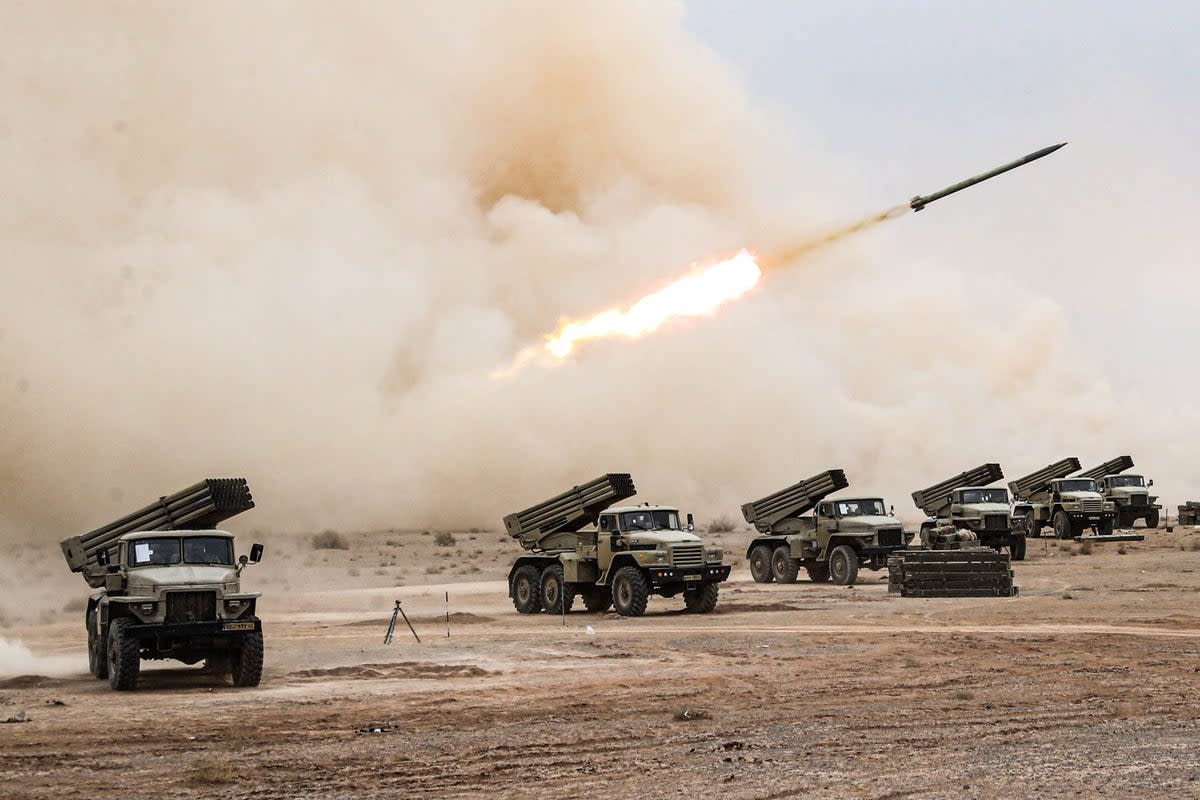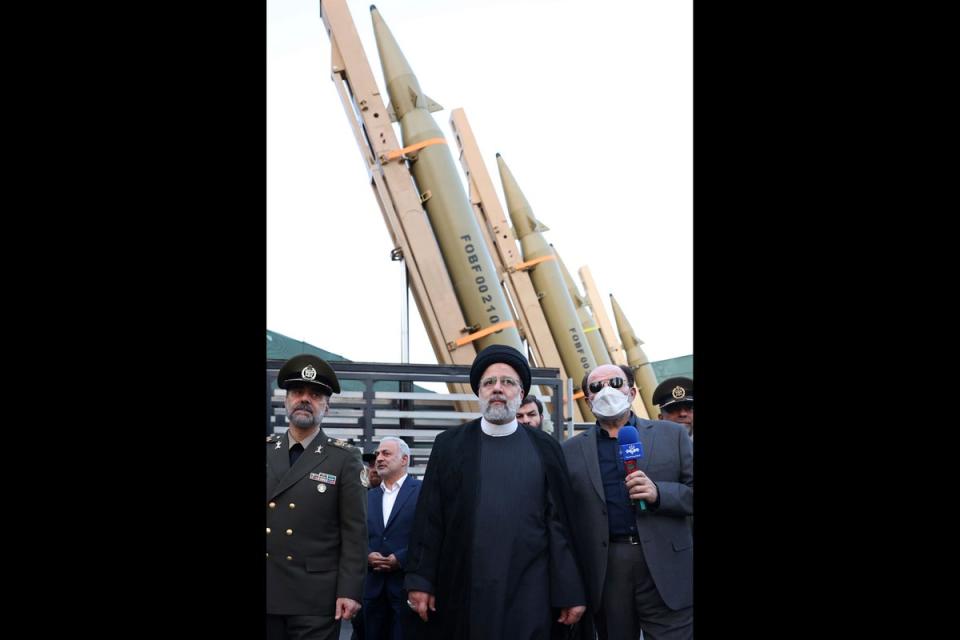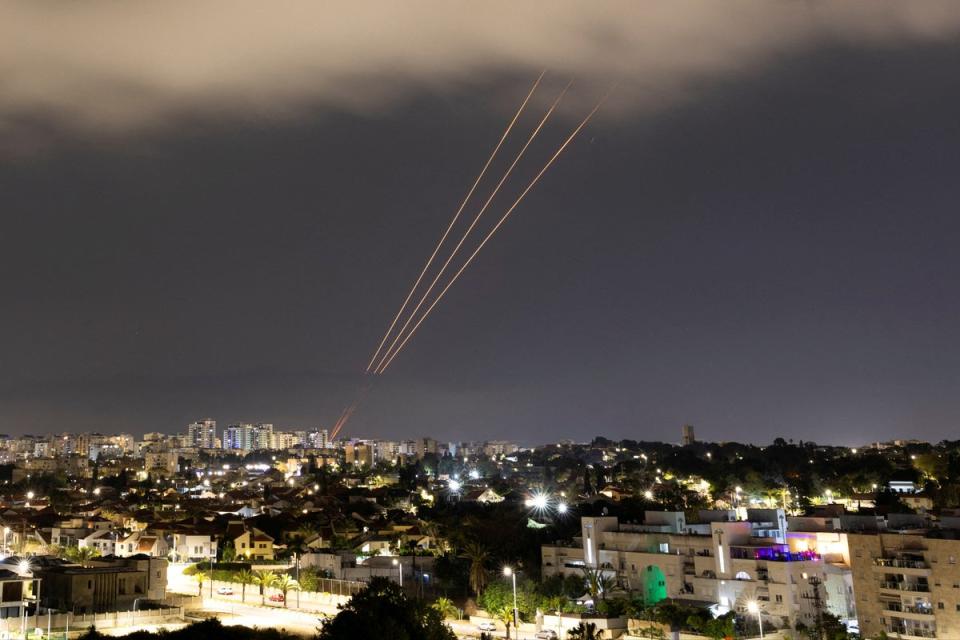Explained: What is Iran’s drone and missile capacity as it launches an attack on Israel?

- Oops!Something went wrong.Please try again later.
Iran fired more than 300 drones and ballistic missiles at Israel on Sunday night, sparking concerns that wider regional war could break out.
It marks the first time a direct military assault has been launched by Tehran on Israel despite decades of tension in the region which have been magnified in recent months by Israel’s devastating war on Gaza.
Iran’s attack came amid rising tensions following an attack on the Iranian consulate in the Syrian capital Damascus.
Tehran had vowed retaliation for the strike earlier this month which killed several of its senior military leaders even as the US and its allies made intense diplomatic efforts to try and contain the fallout.
Iran warned Israel of a larger attack on its territory should it retaliate against the attack on Sunday, adding that Washington has been warned not to back Israeli military action.
According to the US Office of the Director of National Intelligence, Iran is armed with the largest number of ballistic missiles in the region.
As tensions rise in the Middle East, here’s what we know about Iran’s drone and missile capabilities:

The semi-official Iranian news outlet ISNA published a graphic this week showing nine Iranian missiles it said could reach Israel.
These included the ‘Sejil’, capable of flying at more than 10,500 miles per hour and with a range of 1,550 miles, the ‘Kheibar’ with a range of 1,240 miles, and the ‘Haj Qasem’, which has a range of 870 miles and is named after Quds Force commander Qasem Soleimani, who was killed in a US drone strike in Baghdad four years ago.
Iran, a major producer of drones, said in August it had built an advanced drone named Mohajer-10 with an operational range of 1,240 miles and capable of flying for up to 24 hours with a payload of up to 300 kg.
Iran says its ballistic missiles are an important deterrent and retaliatory force against the United States, Israel and other potential regional targets. It denies seeking nuclear weapons.

The Arms Control Association, a Washington-based think tank, said Iran’s missile programme is largely based on North Korean and Russian designs and has benefited from Chinese assistance.
The Arms Control Association says Iran’s short-range and medium-range ballistic missiles include Shahab-1, with an estimated range of 190 miles, the Zolfaghar, with 435 miles; Shahab-3, with 500 to 620 miles, Emad-1, a missile under development with up to 1,240 miles and Sejil, under development, with 930 to 1,550 miles.
Iran also has cruise missiles such as Kh-55, an air-launched nuclear-capable weapon with a range of up to 1,860 miles, and the advanced anti-ship missile the Khalid Farzh, with about 186 miles, capable of carrying a 1.1-ton warhead.

